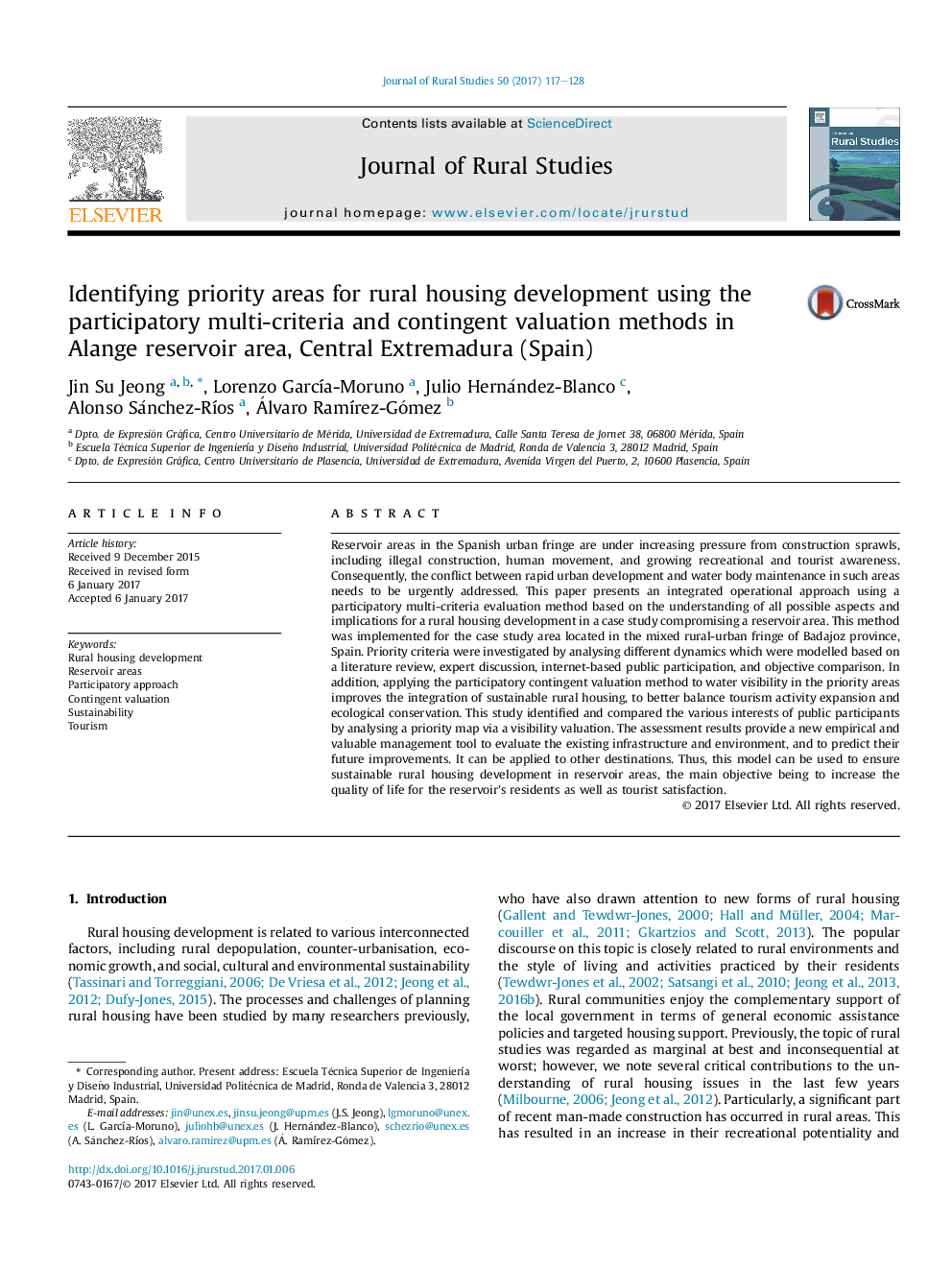| Article ID | Journal | Published Year | Pages | File Type |
|---|---|---|---|---|
| 4759950 | Journal of Rural Studies | 2017 | 12 Pages |
Abstract
Reservoir areas in the Spanish urban fringe are under increasing pressure from construction sprawls, including illegal construction, human movement, and growing recreational and tourist awareness. Consequently, the conflict between rapid urban development and water body maintenance in such areas needs to be urgently addressed. This paper presents an integrated operational approach using a participatory multi-criteria evaluation method based on the understanding of all possible aspects and implications for a rural housing development in a case study compromising a reservoir area. This method was implemented for the case study area located in the mixed rural-urban fringe of Badajoz province, Spain. Priority criteria were investigated by analysing different dynamics which were modelled based on a literature review, expert discussion, internet-based public participation, and objective comparison. In addition, applying the participatory contingent valuation method to water visibility in the priority areas improves the integration of sustainable rural housing, to better balance tourism activity expansion and ecological conservation. This study identified and compared the various interests of public participants by analysing a priority map via a visibility valuation. The assessment results provide a new empirical and valuable management tool to evaluate the existing infrastructure and environment, and to predict their future improvements. It can be applied to other destinations. Thus, this model can be used to ensure sustainable rural housing development in reservoir areas, the main objective being to increase the quality of life for the reservoir's residents as well as tourist satisfaction.
Related Topics
Life Sciences
Agricultural and Biological Sciences
Forestry
Authors
Jin Su Jeong, Lorenzo GarcÃa-Moruno, Julio Hernández-Blanco, Alonso Sánchez-RÃos, Álvaro RamÃrez-Gómez,
